Five esteemed locations in Uttarakhand, where five rivers converge into the River Alaknanda to ultimately give rise to the sacred River Ganges (known as Ganga in Hindi), are collectively referred to as Panch Prayag, meaning 'five confluences'. The River Ganges holds profound significance in Indian culture, revered as a deity bestowing life, and its waters are integral to religious ceremonies. These five sites, arranged in descending order of river confluence, include Vishnuprayag, Nandaprayag, Karnaprayag, Rudraprayag, and Devprayag. Pilgrims from all corners of the nation visit these sites, believing that immersing oneself in the waters at these locations purifies the soul and brings one closer to moksha, or spiritual liberation.
According to Hindu mythology, her force was immense when the Goddess Ganga descended to Earth. To mitigate her strength, it is believed that she divided into 12 channels, which flow independently until reuniting after Devprayag, where the Alaknanda and Bhagirathi rivers merge, forming the River Ganga once more.
How to reach Panch Prayags?
To embark on this sacred journey, one must first reach Rishikesh (or Haridwar) and arrange for a dependable taxi to proceed by road. The Panch Prayag road expedition commences at Vishnuprayag, proceeding through Nandaprayag, Karnprayag, Rudraprayag, and finally Devprayag. Vishnuprayag is approximately 265 km from Rishikesh; Nandaprayag is 190 km; Karnprayag is around 170 km; Rudraprayag is almost 140 km; and Devprayag is 69 km from Rishikesh.
Located amidst the lofty peaks of the Himalayas with consistently low temperatures, our skilled Savaari drivers from Rishikesh, Haridwar, and Dehradun advise against traveling during winter due to harsh cold conditions. The optimal time for embarking on a Panch Prayag road journey is from May to June when the roads are in excellent condition, and the weather remains pleasant. It's advisable to avoid the monsoon months as they are not conducive for the trip. For those planning a family visit to these sacred sites, booking a one-way cab is recommended to save on expenses. Conversely, for group travel, opting for an economical tempo traveler from Delhi or Dehradun is suggested as the shared experience enhances the spiritual journey.
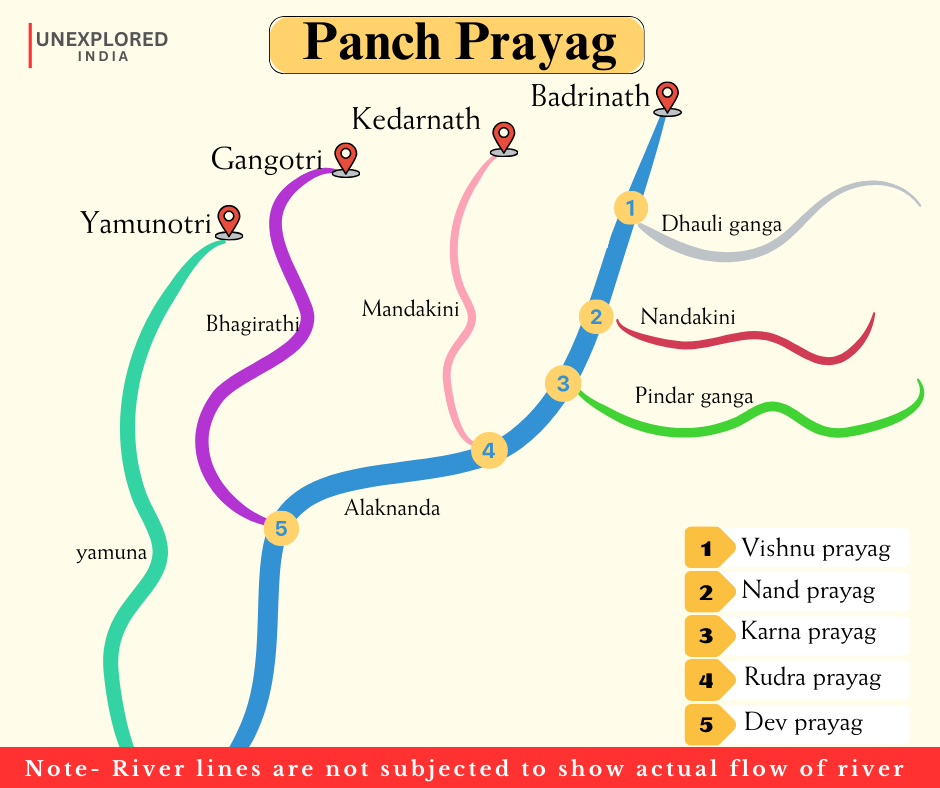
Vishnu Prayag - The gateway to Badrinath
Formed by the confluence of the impetuous Vishnu Ganga (known after this point as Alaknanda) and the Dhauliganga River, The confluence occurs at a height of 1,372 meters in Uttarakhand’s Chamoli district, near Joshimath. Vishnuprayag has an ancient temple called Vishnu Kund, it is said that the sage Narad worshipped Lord Vishnu at this sanctified spot. The Alaknanda River runs before Lord Vishnu’s sacred temple in Badrinath. Along with its religious significance, Vishnuprayag is also a popular destination for adventure seekers as it offers trails for trekking and hiking. A few noted treks include the Valley of Flowers, Kagbhusandi, and Hemkund Lake.
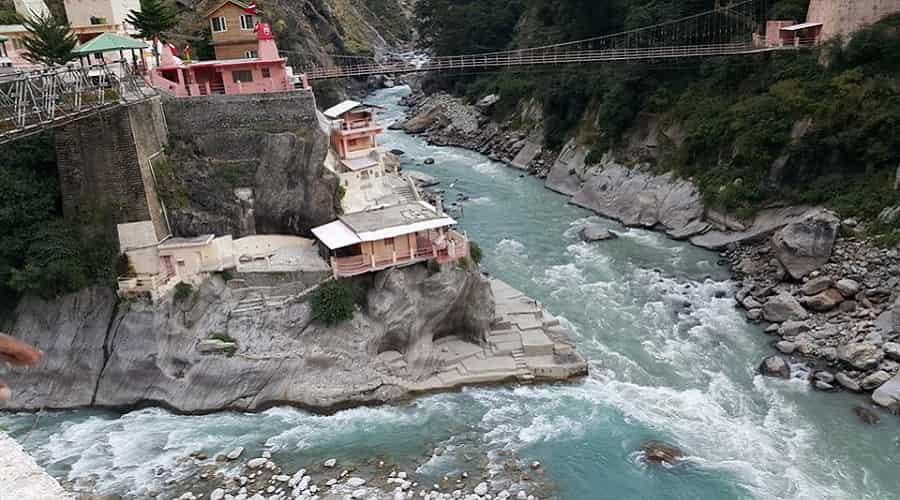
Nand Prayag - Where tales of Krishna are sung
Nandaprayag stands as the second confluence where the Alaknanda River merges with the Nandakini River, meeting at an elevation of 1,358 meters in the Chamoli district of Uttarakhand. Legend has it that this site was christened after Yadava King Nanda, renowned for his devotion to Lord Vishnu. It is believed that his unwavering devotion at this very spot earned him the blessing of having Lord Krishna, an embodiment of Lord Vishnu in his childhood form, as his foster father. Vishnu granted Nanda and his wife Yashoda the boon of a son, as He did to Devaki and her husband Vasudeva. Faced with a quandary, as both couples were His devotees, Vishnu ensured that Krishna, His incarnation, was born to Devaki and Vasudeva but raised by Yashoda and Nanda. A temple dedicated to Gopal, a manifestation of Krishna, stands at this sacred site.
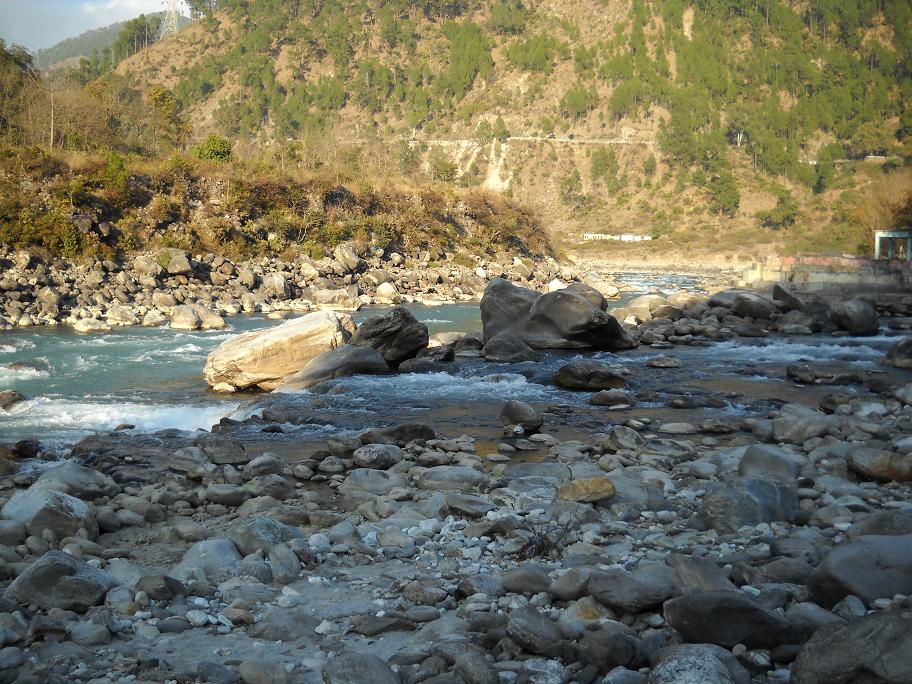
Karna Prayag - Where Surya granted Karna a boon
Situated en route to Badrinath, Karnaprayag marks the juncture where two revered rivers, Alaknanda and Pindar, merge. Legend has it that Karna from the Mahabharata undertook extensive meditation at this very site, seeking the invincible shield that would render him an unmatched warrior in battle. Additionally, Swami Vivekananda, accompanied by his disciples, is said to have engaged in meditation here. Karnaprayag serves as the sub-divisional headquarters of Chamoli district, with roads leading from here to Almora, Nainital, and the Jim Corbett National Park.
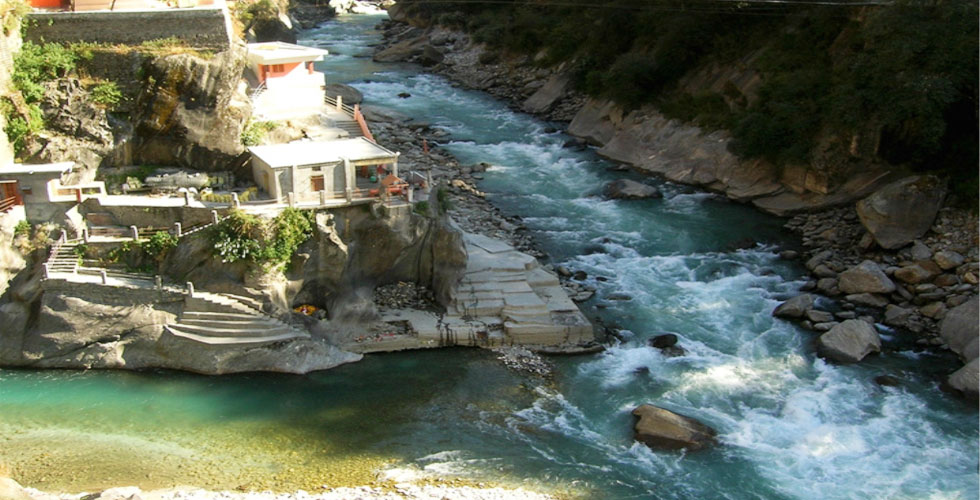
Rudra Prayag - The misty abode of Shiva
Named in reverence to Lord Shiva (Rudra), Rudraprayag stands as a serene pilgrimage destination nestled at the sacred confluence of the Alaknanda and Mandakini rivers, esteemed as one of the 'Panch Prayag' or five sacred confluences. The union of Mandakini and Alaknanda presents a picturesque spectacle, akin to two sisters embracing each other. Legend holds that Narad Muni sought the blessings of Lord Shiva, who appeared in his Rudra Avtaar (incarnation), to unravel the mysteries of music. It is said that Lord Shiva used to do Tandav here.
Rudraprayag boasts significant religious landmarks, notably the Shiva and Jagdamba temples. Formerly part of Chamoli and Tehri districts, Rudraprayag emerged as a distinct district in 1997, encompassing the Kedarnath Valley along with portions of Tehri and Pauri districts. Serving as a pivotal junction for pilgrimages to Badrinath and Kedarnath Dham, Rudraprayag is adorned with numerous temples, including the renowned Koteshwar Mahadev Temple nestled along the banks of the Alaknanda river. This enchanting cave temple, adorned with verdant foliage, is dedicated to Lord Shiva, believed to have halted and meditated at this sacred site.
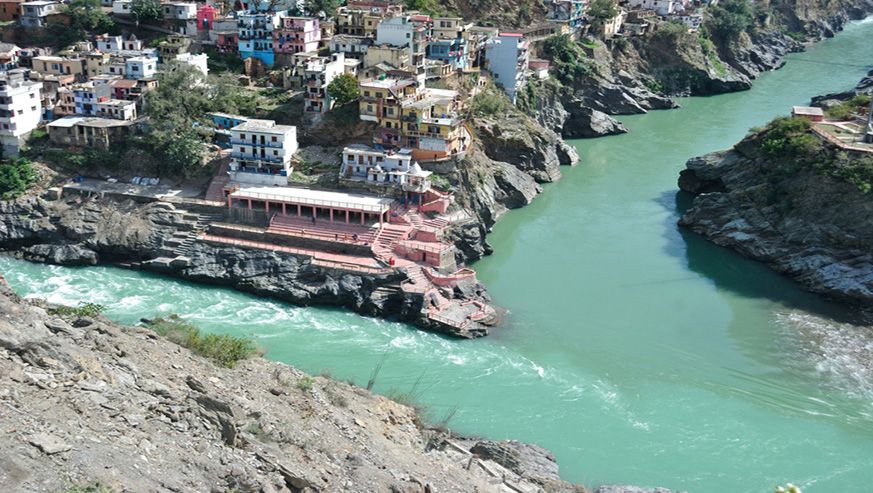
Dev Prayag - The revered land of gods
Devprayag literally means 'holy confluence'. It is an extremely important religious site for Hindus. Ganga, the biggest and the holiest river in India, starts its journey to the plains and further towards Bay of Bengal from Devprayag. Situated 72 km away from Rishikesh, Devprayag holds utmost significance among the Panch Prayag. Here, the River Alaknanda converges with the Bhagirathi, originating from Vishnuprayag, Nandprayag, Karnaprayag, and Rudraprayag, to form the revered River Ganga. Devprayag marks the very genesis of the River Ganga. According to popular belief, it is a site where Lord Laxman and Lord Ram engaged in rigorous penance as an expression of remorse for Ravana's Brahmahatya, given his Brahman status. Devotees immerse themselves in ritualistic baths and prayers here and at other Panch Prayags before continuing their pilgrimage to Chota Chardham.
Aside from the sacred Sangam, the Raghunath Temple stands as a major attraction, purportedly one of the oldest temples dedicated to Lord Ram, situated right at the confluence. A visit to the Chandrabadani Temple, approximately 20 km from Devprayag is also suggested. It is dedicated to Goddess Sati. Legend has it that this is where the torso of Goddess Sati fell, along with her weapons, which are said to be scattered across the area. Perched at an altitude of 2277 meters above sea level, the temple offers a breathtaking panorama of the Garhwal Hills, as well as views of the Kedarnath, Badrinath, and Surkanda peaks.
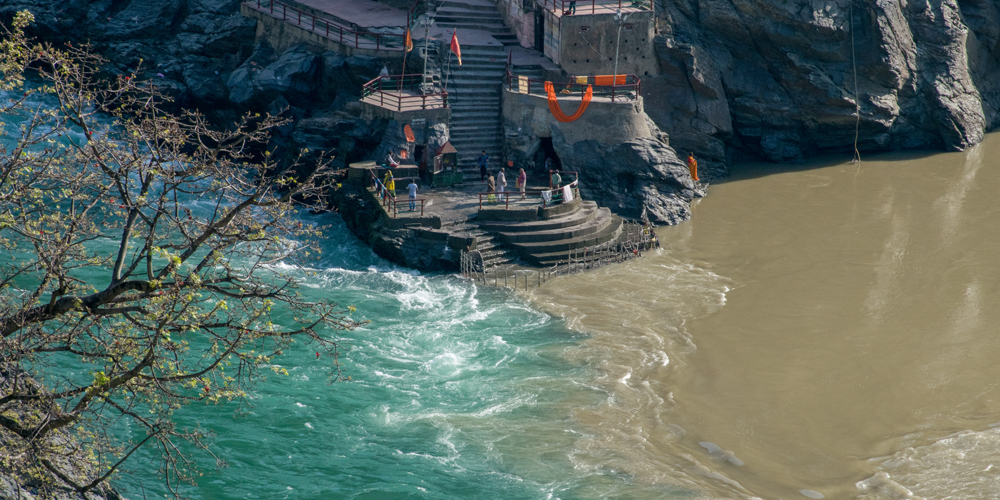
Continue to read other blogs to enhance your spiritual knowledge. Stay tuned for other blogs.